Navigating the Year: A Comprehensive Look at the 2025 January Calendar
Navigating the Year: A Comprehensive Look at the 2025 January Calendar
Introduction
In this auspicious occasion, we are delighted to delve into the intriguing topic related to Navigating the Year: A Comprehensive Look at the 2025 January Calendar. Let’s weave interesting information and offer fresh perspectives to the readers.
Table of Content
Navigating the Year: A Comprehensive Look at the 2025 January Calendar
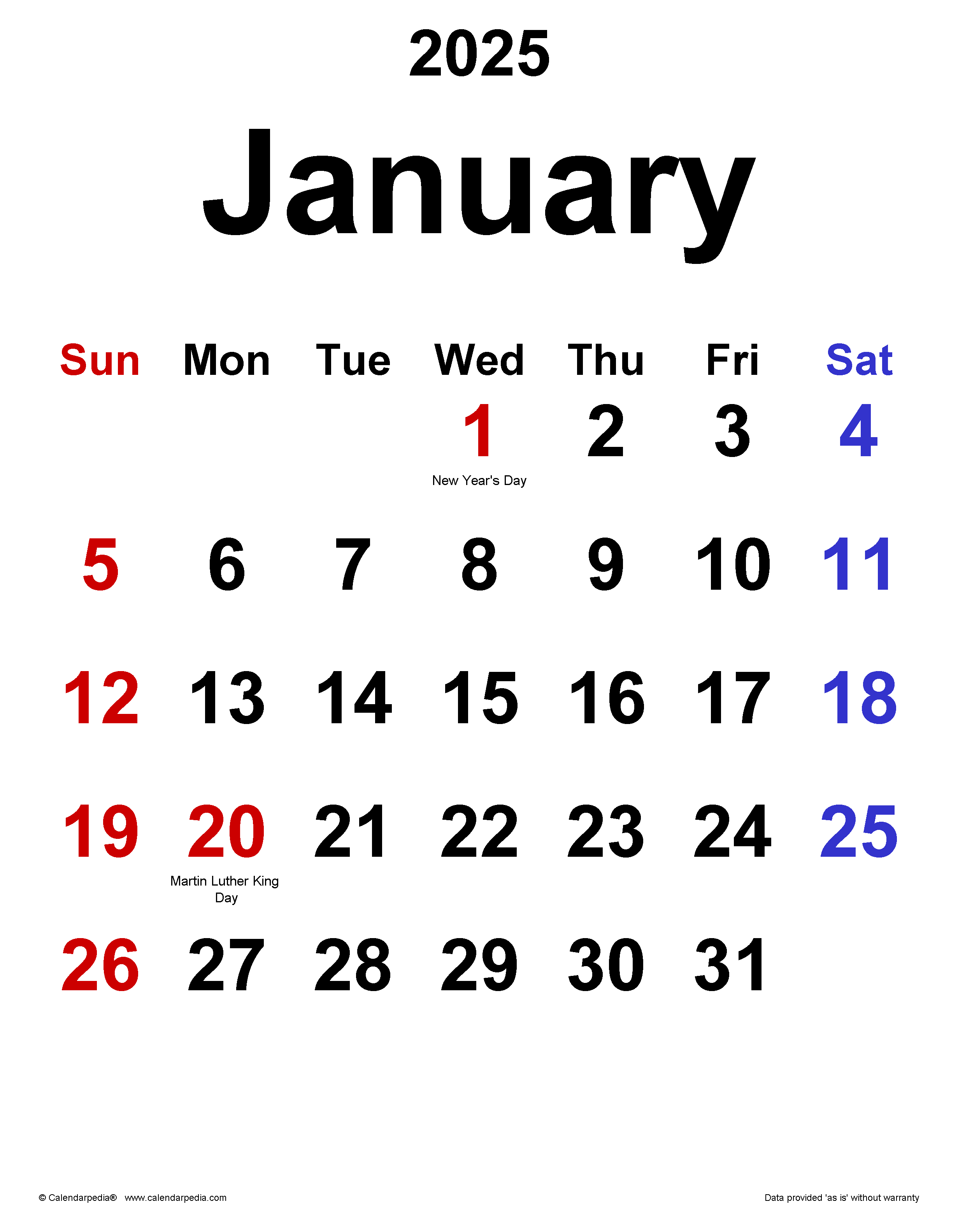
The beginning of a new year is often a time for reflection, planning, and setting intentions. To facilitate this process, many individuals and organizations rely on calendars to organize their time and track important dates. While the concept of a calendar is familiar, the intricacies of its design and the specific needs of different users can lead to variations in their structure and content.
This article delves into the significance of the 2025 January calendar, particularly focusing on its potential role in facilitating productivity, planning, and overall organizational success. The discussion will avoid using the phrase "2025 January calendar" directly, instead focusing on the calendar’s features, benefits, and applications.
Understanding the Importance of a Comprehensive Calendar
A well-designed calendar serves as a central hub for information, enabling individuals and organizations to effectively manage their time and resources. It acts as a visual reminder of upcoming events, deadlines, and appointments, facilitating efficient scheduling and reducing the risk of missed opportunities or deadlines.
The 2025 January calendar, in particular, holds significance as it marks the beginning of a new year. This period often presents a unique opportunity for individuals and organizations to set new goals, initiate projects, and establish a framework for achieving their objectives throughout the year.
Key Features and Benefits of the 2025 January Calendar
The 2025 January calendar, like any calendar, offers a range of features and benefits designed to enhance organization and efficiency. These include:
- Visual Representation of Time: The calendar provides a clear visual representation of the month, enabling users to easily identify weekdays, weekends, and holidays. This visual framework facilitates a better understanding of the flow of time and helps users plan their activities accordingly.
- Space for Notes and Reminders: Many calendars incorporate spaces for notes and reminders, allowing users to jot down important information, deadlines, or personal appointments. This feature ensures that critical information is readily accessible and reduces the risk of forgetting important tasks.
- Integration with Other Tools: Modern calendars often integrate with other tools such as email, task management software, and online calendars. This seamless integration allows users to manage their schedule across multiple platforms and ensures that all relevant information is synchronized.
- Customization Options: Calendars can be customized to suit individual preferences and needs. Users can choose different layouts, colors, and themes to personalize their calendar experience and create a visually appealing and functional tool.
Utilizing the Calendar for Enhanced Productivity and Planning
The 2025 January calendar can serve as a powerful tool for enhancing productivity and planning across various domains:
- Personal Planning: Individuals can use the calendar to schedule personal appointments, track deadlines for projects, and plan leisure activities. This ensures that personal commitments are met and free time is effectively managed.
- Professional Planning: Professionals can utilize the calendar to schedule meetings, track project milestones, and manage deadlines. This helps maintain a structured workflow and ensures that tasks are completed on time.
- Team Collaboration: Organizations can use shared calendars to coordinate team schedules, track project progress, and facilitate communication. This fosters collaboration and improves overall efficiency within the team.
- Event Planning: The calendar can be used to plan events, conferences, or meetings. This helps ensure that all necessary arrangements are made in advance and that the event runs smoothly.
Frequently Asked Questions
Q: How can I effectively utilize the 2025 January calendar for personal planning?
A: To effectively utilize the calendar for personal planning, consider using color-coding for different categories of appointments (e.g., work, personal, errands), setting reminders for important events, and reviewing the calendar regularly to ensure that all commitments are accounted for.
Q: What are some tips for using the calendar for professional planning?
A: When using the calendar for professional planning, it is essential to allocate specific time slots for tasks, schedule meetings with ample lead time, and utilize the calendar to track project progress and deadlines.
Q: How can organizations leverage the calendar for effective team collaboration?
A: Organizations can leverage shared calendars by assigning specific tasks to team members, tracking project milestones collectively, and using the calendar as a communication tool for updates and reminders.
Q: What are some strategies for using the calendar to plan events?
A: When planning events, utilize the calendar to schedule tasks such as venue booking, speaker coordination, and marketing efforts. Set reminders for deadlines and allocate sufficient time for each task to ensure a smooth and successful event.
Tips for Maximizing the Benefits of the 2025 January Calendar
- Start Early: Begin using the calendar as soon as possible to establish a routine and avoid last-minute scrambling.
- Be Specific: When scheduling events, be as specific as possible regarding the time, location, and duration.
- Use Reminders: Set reminders for important deadlines, appointments, and tasks to avoid overlooking them.
- Review Regularly: Review the calendar frequently to ensure that all commitments are up-to-date and that no conflicts exist.
- Adapt and Adjust: As needs change, adjust the calendar to reflect new priorities and commitments.
Conclusion
The 2025 January calendar, while seemingly simple, offers a powerful tool for navigating the year with efficiency and organization. By utilizing its features, individuals and organizations can effectively manage their time, plan for the future, and achieve their goals. The calendar’s versatility and adaptability make it a valuable resource for individuals, teams, and organizations across various sectors, serving as a foundation for success in the new year.
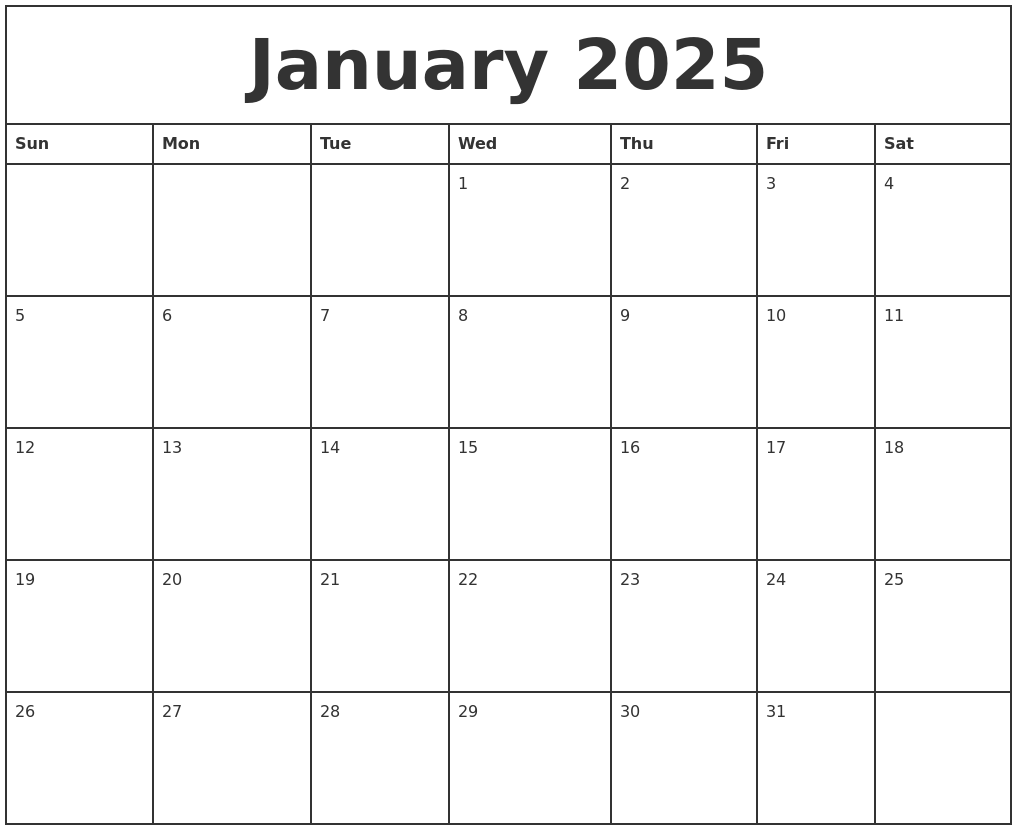
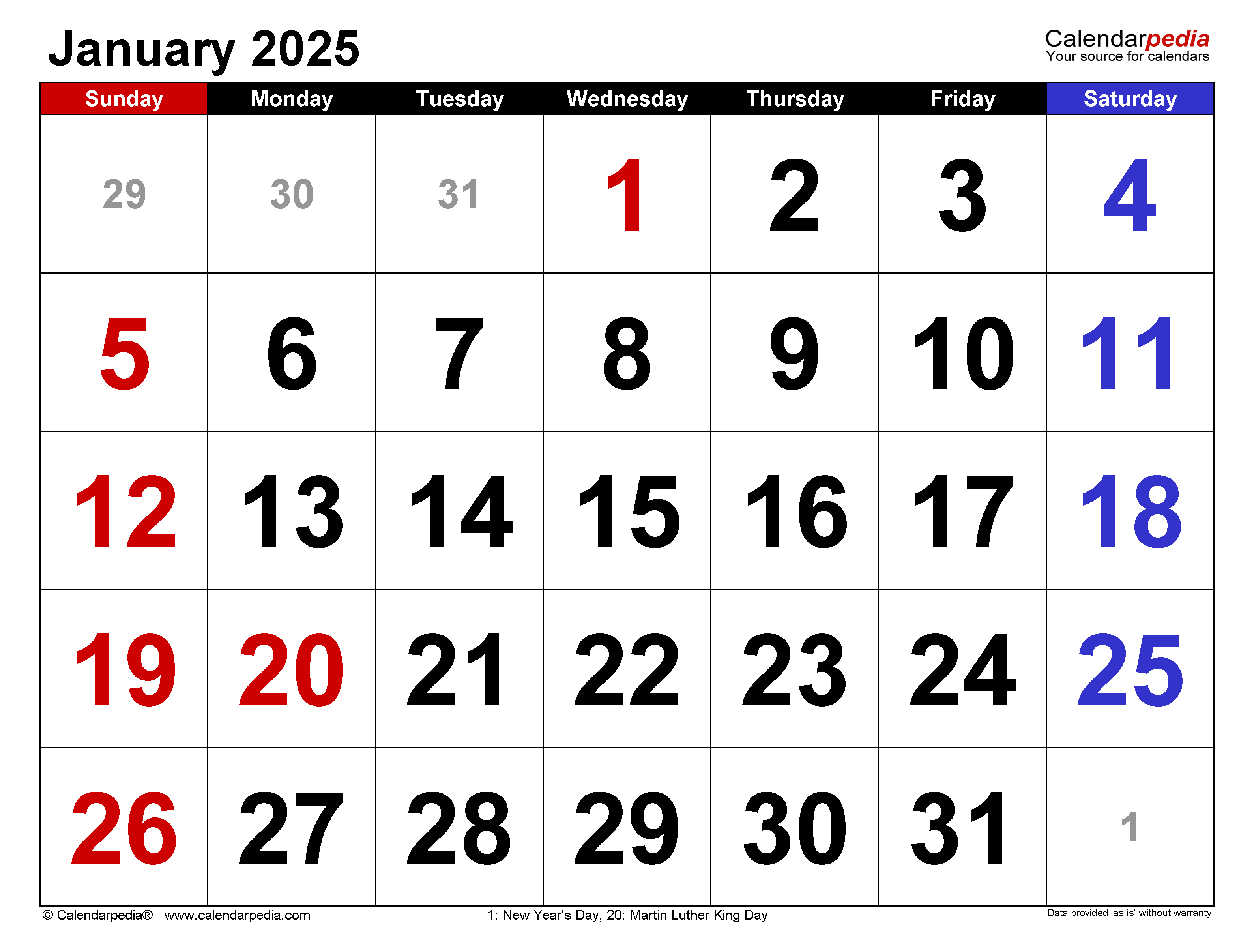
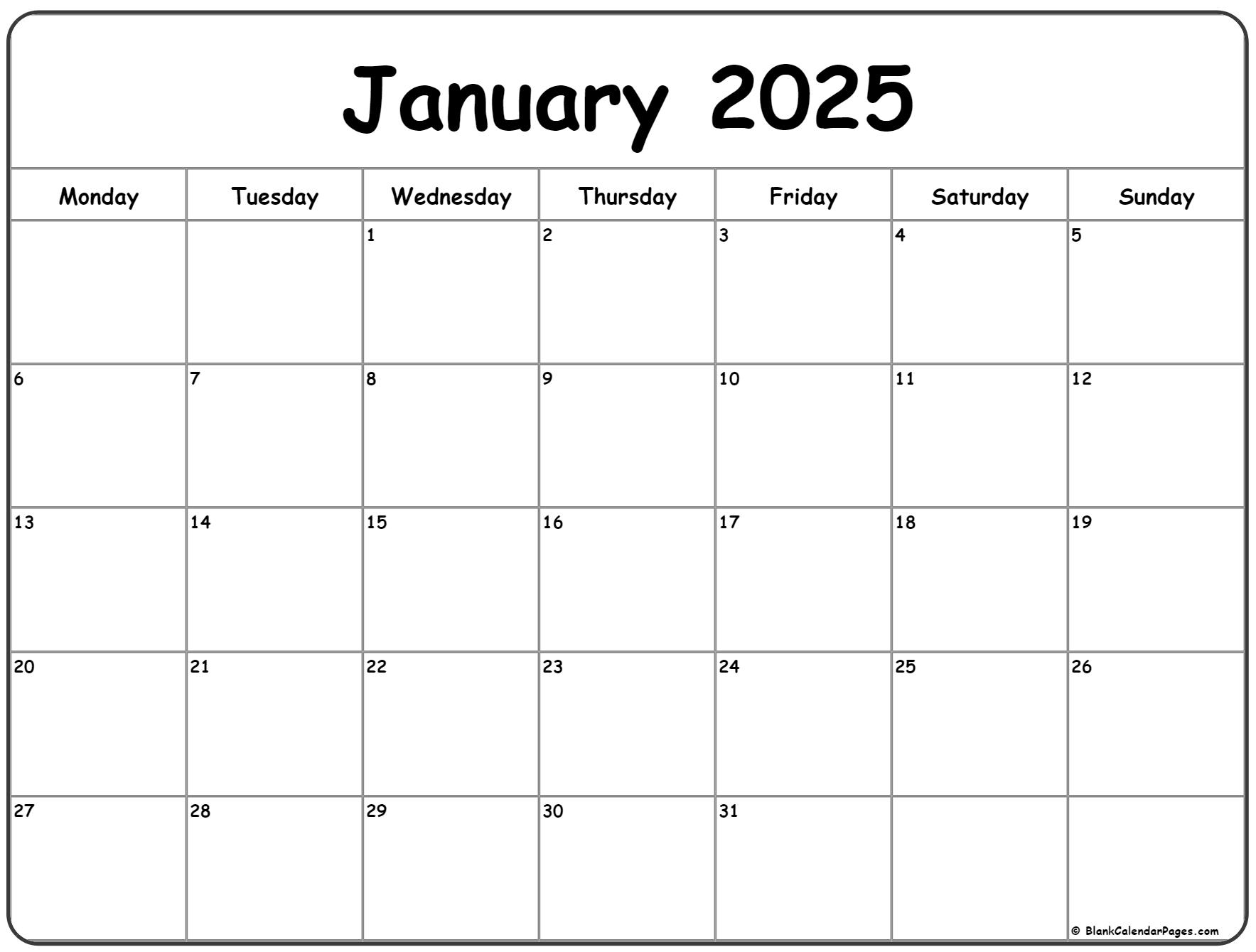
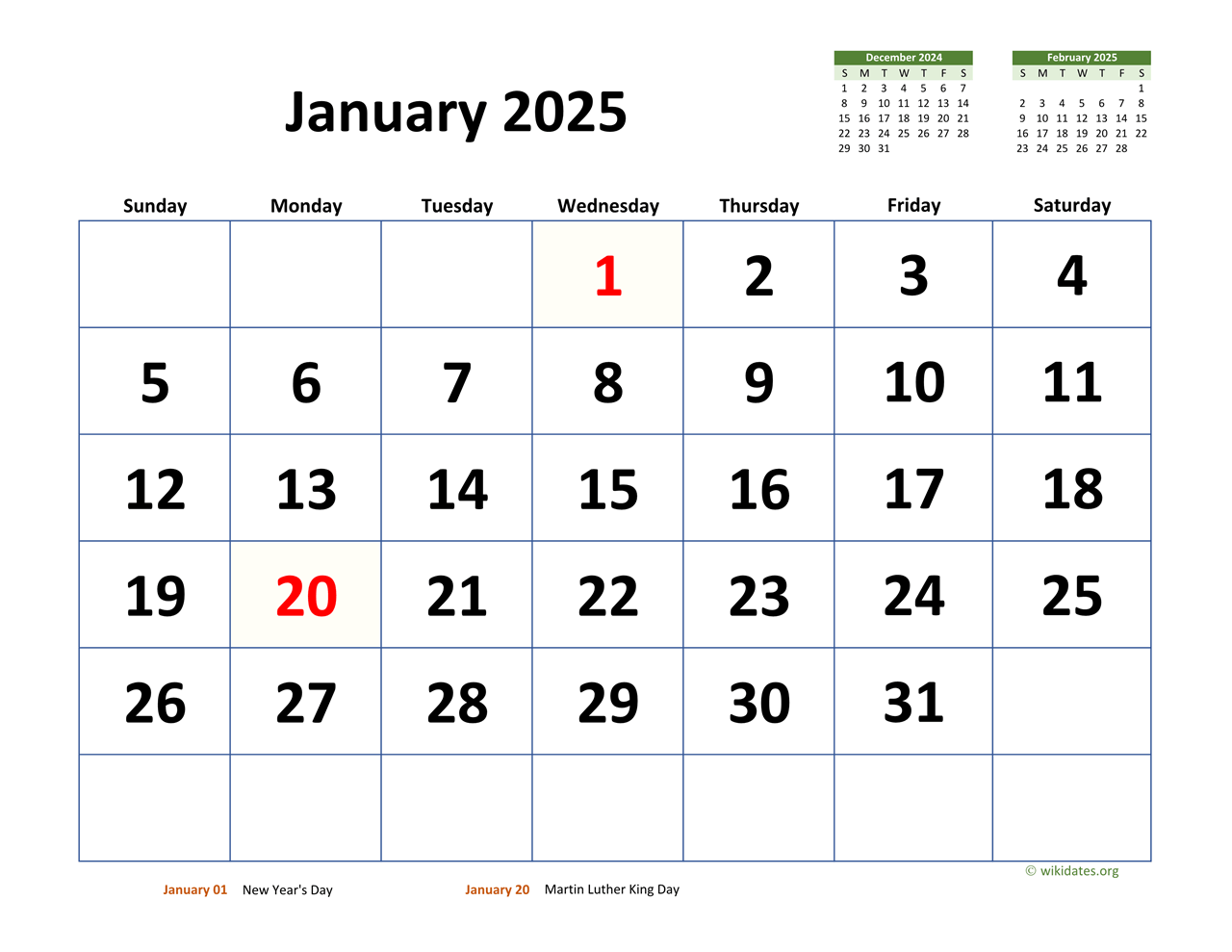
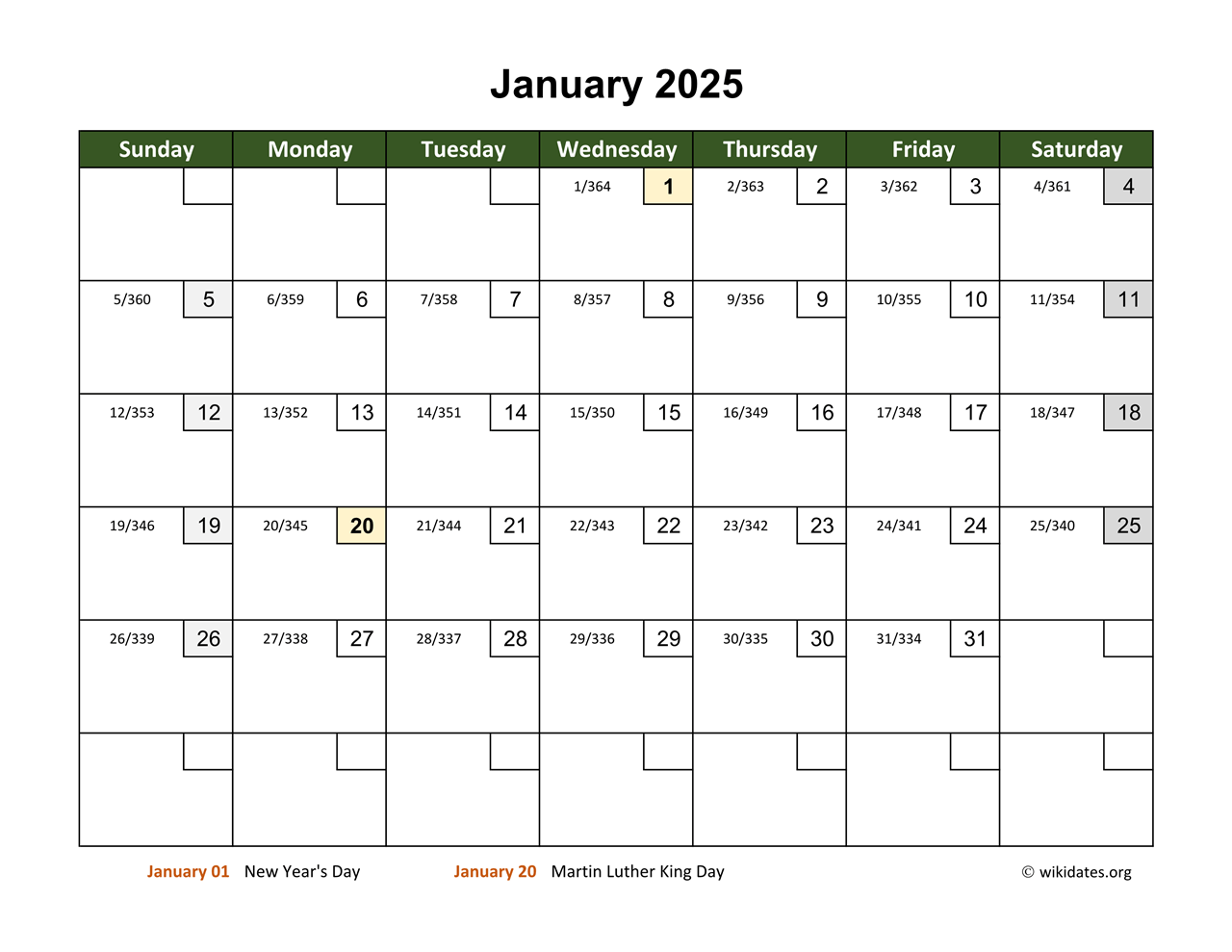
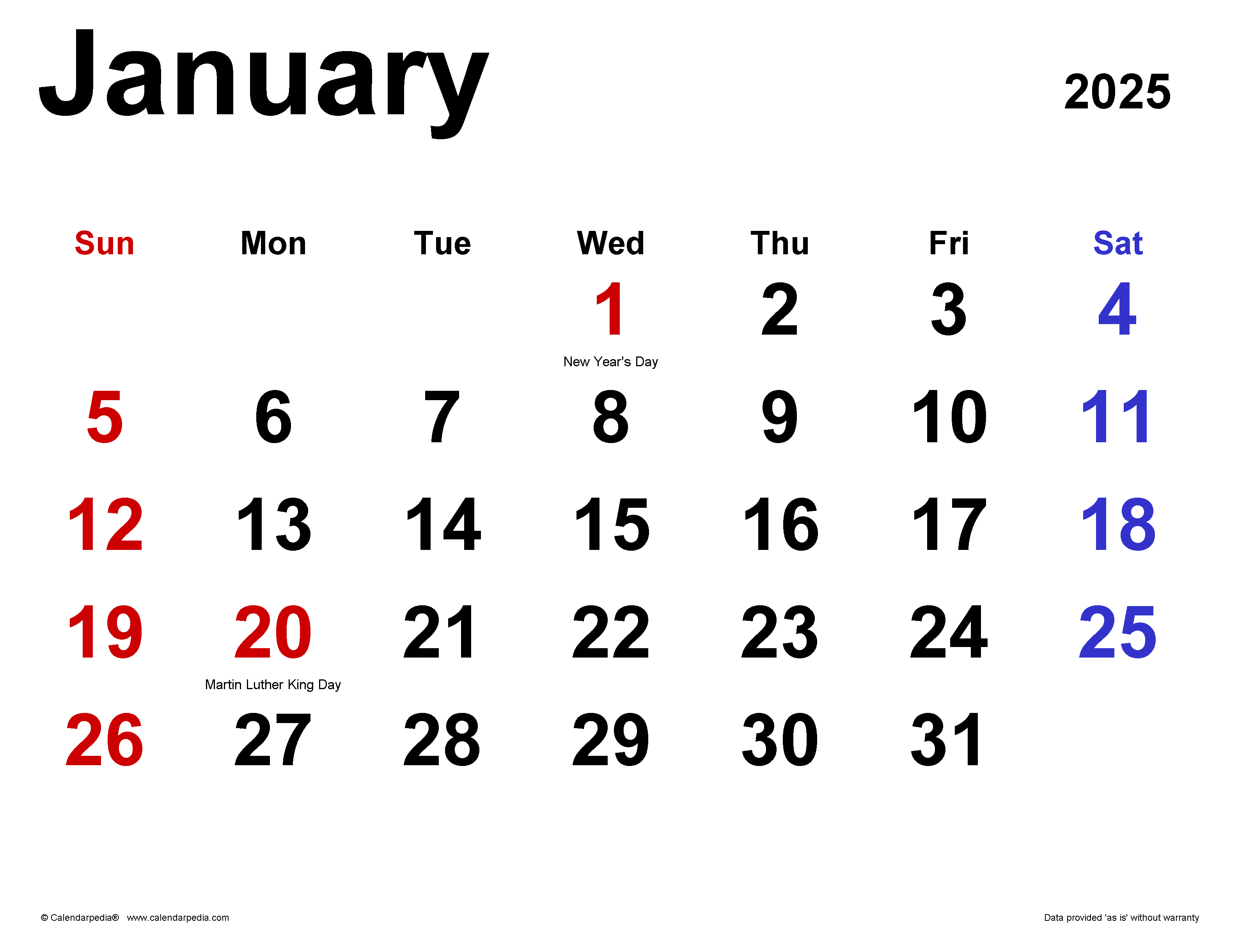

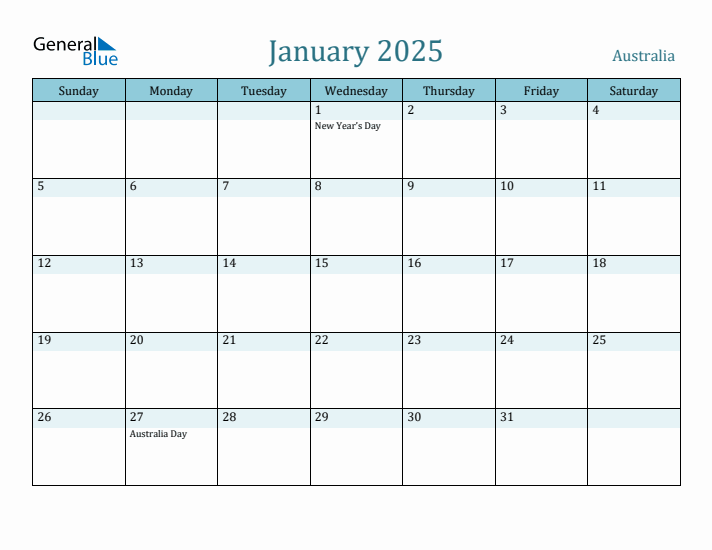
Closure
Thus, we hope this article has provided valuable insights into Navigating the Year: A Comprehensive Look at the 2025 January Calendar. We appreciate your attention to our article. See you in our next article!